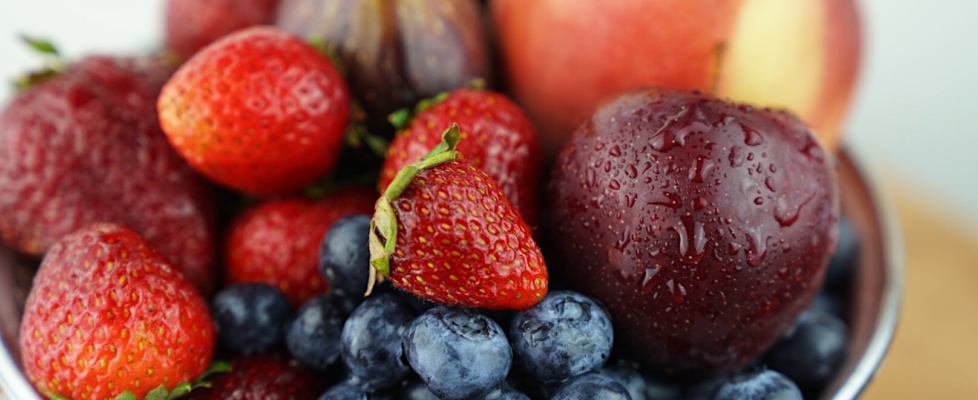Can I Eat Fruit if I am a Diabetic?
Fruit contains some of the highest levels of antioxidants, and essential vitamins and minerals needed for good health. So even if you’re a diabetic, the good news is that fruit can be part of a healthy well balanced diet!
It is important to distinguish between “added sugar” and naturally occurring sugar. The sugar in fruit is naturally occurring, and therefore is processed by the body differently than added sugar. Keep in mind that fruit, being a carbohydrate, will cause a rise in blood sugar, but the fiber and naturally occurring sugar in fruit are much slower to digest than the added sugar in say a cookie, cake or candy. The fiber in fruit can help you feel full longer, helping to keep your blood sugar stable. Berries and fruit with skin, are a great choice because they contain some of the highest amounts of fiber.
Look for fruit that is fresh, frozen or canned (without added sugar). Practice portion control when eating fruit, and try to limit dried fruit (which sometimes contains added sugar) to no more than 2 tablespoons per serving. Additionally, eating a piece of fruit is a great way to satisfy a craving for sweets, try ½ cup of fresh berries with Greek yogurt for a healthy snack, for more snack ideas check out these 5 Healthy Snacks Under 150 Calories.
Nutrition Tip: Paring fruit with a protein (like a hard boiled egg or a small handful of nuts) will help give you a slow steady release of blood sugar.
So what is one serving of fruit?
One serving of fruit is approximately 60 calories, and 15 grams of carbohydrate. Which is equivalent to a small piece of whole fruit, ¾ – to 1 cup of fresh berries or melons, or approximately ½ cup of frozen or canned fruit. For optimal blood sugar control, skip the smoothie or large fruit salad, and try to break up your fruit intake throughout the day, aim to eat one serving of fruit at a time. If you’re counting carbs, fruit can be exchanged for other carbohydrate source such as starchy vegetables, whole grains, or dairy. Aim for more servings of vegetables than fruit per day, the Dietary Guidelines for Americans recommends aiming for 2 cups of fruit and at least 2.5 cups of vegetables per day based on a 2000 calorie diet.
Check out these examples of a serving size of fruit:
- 1 small apple with skin (~4 oz)
- ½ of a banana, or 1 extra small banana (~4 oz)
- ¾ cup of blueberries
- ¾ cup of blackberries
- 1 cup raspberries
- 1 ¼ cup whole strawberries
- 17 small grapes
- ¾ cup fresh pineapple
- 1 small orange (~6 ½ ounces)
- 1 small nectarine (~5 ounces)
- 1 slice of watermelon or 1 ¼ cups cubed
- ½ grapefruit (~ 11 oz)
- ½ of a fresh large pear (~ 4 oz)
- 4 whole fresh apricots (~5 ½ oz) or 8 dried halves
- 13 of a cantaloupe melon (11 oz) or 1 cup cubed
Enjoy a wide variety of colorful fruits and vegetables as part of a healthy well-balanced diet!
